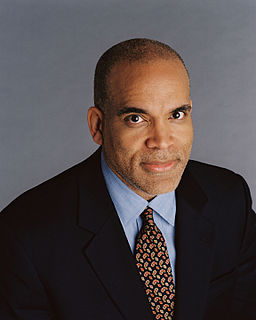 We often hear statements like “what you do in your bedroom should stay out of the boardroom” — patent wishes to disregard how sexuality influences our work. Sex does play into our work, often subtly. We have pictures to prove it.
We often hear statements like “what you do in your bedroom should stay out of the boardroom” — patent wishes to disregard how sexuality influences our work. Sex does play into our work, often subtly. We have pictures to prove it.
Raynard Kington was recently elected as Grinnell College’s 13th president, and soon thereafter the University of Southern California (USC) celebrated the inauguration of Max Nikias, its 11th president. The corresponding photos, or lack thereof, tell a poignant story about displays of sexuality in the workplace.
Dr. Kington’s history of professional accomplishments is substantial; the former acting director of the National Institutes of Health was responsible for spending $10.4 billion as part of President Obama’s economic stimulus package, and his educational background is a triple-threat–MD, PhD and MBA–all from the most prestigious universities. He has a partner and two children, and they live together in the president’s home at the college.
As a husband and parent, he certainly conforms to the traditional image of the college president as family man. He’s also different from the norm because he’s gay.
Now here’s the kicker: the photograph of Dr. Kington above is posted on his blog and originates from the NIH. The image of Kington with his family on the left is embedded from an unfamiliar source. Because as far as we can tell, Grinnell College has no official portrait of President Kington with his family.
Why not?
To seek an answer, let’s look at Max Nikias, USC’s president, who has a whole page devoted to glossy images of him and his family (below right). We strongly believe that presenting a polished picture of the Grinell “first family” is not a matter of limited resources, because Grinnell’s endowment stood at $1.26 billion in January 2011.
Rather, it looks like an issue of displaying sexuality at work. As a straight-identified man, Dr. Nikias openly puts his heterosexuality on display simply by standing next to his wife. Whenever you’re with your spouse or significant other, it’s hard to hide that you’re a sexual being. And it’s common for prominent leaders to showcase their spouses and offspring in their work life. Politicians and college presidents come to mind, for example.
 On an unconscious level, this is a question of coming out for Grinnell’s president, even though he’s already out at work. He even has it somewhat easier than others, with a spouse and children. On one hand, he comes out any time he references his partner, and on the other, should someone see him with his child and refer to his “wife,” he’s likely compelled to correct them with an automatic “my husband.” Rarely would he need to speak the words, “I’m gay.” Still, being out at work is a multi-faceted experience, and in this case we’re examining the visual publicity aspect.
On an unconscious level, this is a question of coming out for Grinnell’s president, even though he’s already out at work. He even has it somewhat easier than others, with a spouse and children. On one hand, he comes out any time he references his partner, and on the other, should someone see him with his child and refer to his “wife,” he’s likely compelled to correct them with an automatic “my husband.” Rarely would he need to speak the words, “I’m gay.” Still, being out at work is a multi-faceted experience, and in this case we’re examining the visual publicity aspect.
Thus, we encourage Dr. Kington to present–online and off-line–a more formal image of his family, which would be helpful for Grinnell College, and for society at large.
We have a dream that one day we’ll all value the influence of our sexuality on who we are and on the work we do, so that someone like Zach Wahls will know better when speaking in favor of marriage equalityand against House Joint Resolution 6 in the Iowa House of Representatives. Raised by his biological mother and her same-sex partner, he concludes his remarks with, “the sexual orientation of my parents has had zero effect on the content of my character,” and the audience erupts in applause
In the workplace, and in the cases of Raynard Kington’s sons and Max Nikias’ daughters, this rings false.
So what’s a good way to display your sexuality at work?
With pride. Pride in your family, and pride in your self.




Pingback: Tweets that mention How to Display Your Sexuality at Work | Whole Wide Work -- Topsy.com
I try not to interchange the terms “sex” and “sexuality” too freely. These words only seem to warrant a finite separation with regard to settings where copulation would not take place. For instance, I would think it easy for a listener to understand my intent if I were maturely discussing “sexuality” as it relates to everyone, everywhere, while likely prompting miscomprehension if I instead elected to use “sex” in a discussion about the office or church or grade school. Many speakers open enough to verbalize the subject(s) recognize the almost indistinguishable root relationship between the two words and therefore readily alternate them, but fresh listeners almost always require decisive articulation dissecting that pair.
In this sense, it might similarly serve readers to explain that I view what was once called “sexual preference” as a subset of “sexuality,” the “sexuality” itself being something much greater in scope. “Sexual preference,” as largely encompassing as that is, would seem to refer only to the gender(s) to which one is most desirously and biologically allured. “Sexuality,” on the other hand, can be perceived/evoked through abstract art, poetry, tides, the movement of objects in wind, musical rhythms, the giving of gifts, momentum, friction, scent, environmental sounds, texture, conversation, meditation, color, or even sport. Nothing on that list has gender. One could no more engage in sexual congress with a poem than s/he could with a genderless block of stone. That does not mean that the poem isn’t completely sexual in nature, though the stone is likely not. “Preference” is only one aspect of a universe of “sexuality.” I think that’s important common ground from which to start because while, say, no one of any “preference” is to engage in a sex act in a corporate environment, sexual predispositions also do not get left at home when one enters the workplace. They are an inseparable part of us. So the very settings that disallow “sex” as an act, cannot disallow “preference” and therefore “sexuality” without disallowing human attendance altogether.
With those distinctions in mind, I do find the workplace to be replete with displays of sexuality. Being pregnant at work is a none too indirect display that we’ve come to cherish in the professional arena as we once had exclusively in the home. Mode of dress is a frequented display, traditionally indoctrinated along gender lines that, while unrelated to “sexual preference,” is still a visual proclamation of optimized “attractiveness,” thus sexual in nature. Family attendance at work events, insurance coverage provided by employers, primary emergency contacts, body language, speaking distances, eye contact, email signatures, seating proximity, screen savers, desktop wallpapers, wedding rings, pleasantries, chivalry, rest rooms; all without direct correlation to the act of sex and without speaking to “preference,” these workplace norms can very visually display and underscore the sexuality within us. To allegorize, if one can perceive the many manners in which a nun exudes sexuality, perhaps without ever having engaged in a single sex act herself, so too can one understand the many manners in which we remain perfectly professional and on task while being enveloped in an almost constant fog of our own exhibited sexuality.
This brings me to the reason I chose to comment on this post. I do find that far too many workplaces as listeners, listeners to the news, listeners to legitimate harassment cases, listeners to complaints and to issues regarding equal rights; they’ve failed to hear the distinction. Perhaps the distinction never had a business case made for it. Many workplaces wholly synonymize sexuality with sex. They come to believe that the presence of the former leads to the unprofessional workplace presence of the latter. There might even be a rolling handful of employers who draw this faulty conclusion entirely pursuant to the cavalier manner in which so many speakers use such terms interchangeably. The result? There is a persistent corporate drive to make our workplaces completely sexually innocuous. It is believed that by attempting to remove the mere suggestions of sexuality (as perceived to have once been accomplished by discouraging women in the workforce or by disallowing homosexuals in the military), that companies can forego any danger of being held accountable for on-the-clock infractions or misunderstandings of even a mild sexual nature.
So, to answer Mr. Chahinian’s question, it is somewhat unfortunate that most of the times I’ve readily perceived visual displays of sexuality in the workplace are times when there was a forceful, negative, corporate push to eliminate it. While I might for a split second notice how wonderfully put-together a person looks in her/his choice of attire on a given day, that is nothing compared to the week-long conversations that ensue when a company programs their email system to disallow the word “love” at the server level. While I might be momentarily surprised that a male co-worker chooses for the first time to passively share with me that he has a husband, that surprise equates to little more than a drop in the bucket of non-work-focused attention when compared to a day of sensitivity refresher courses.
I am very glad that this blog draws our attention to the often subtle visual displays of sexuality in the workplace. Entries not only analyze the unavoidable fact that sexual esteem is workplace-relevant, but bring to the forefront thoughts that help us to see and to envelop these visual displays in a natural, individual way. If otherwise left to only the negative, corporate counter-displays and makeshift business cultures that bring questions of sexuality in the workplace to lengthy policy overhaul, it would be easy to presume that management thinks this is bad; that I should perceive this as bad in others; and that I should perceive it as bad in myself.
Frankly, such is the framework we use to disassociate young children from the subjects of sex and sexuality. Children have a lesser context for comprehending intercourse, complex emotion, attraction, biology, visuals. Knowing that kids cannot yet understand these facets of life the way that adults do, we either try to limit their exposure altogether or, when exposed, drop the subject into a “right and wrong” blueprint. That seems to be exactly how corporations are handling the subject. Well, I am no longer a child. My context is a task-oriented and business-loyal one in addition to my worldly experience for which the company is presumed to pay me. While I understand and agree with business directives that are meant to protect employees from inhospitable work environments, I do have to say that I sometimes view the practice of achieving that goal as being spoken to like a child. So many of the stepping stones to a “safer” interpersonal work environment just presume that while I and my co-workers are paid to be the bests in our fields, we somehow do not have the common sense to refrain from grabbing someone’s behind or using the “f” bomb if we catch an accidental and fleeting glimpse of Sandra Bullock’s thigh on a co-worker’s iPhone. When did it become at all logical that condoning a simple hug hello between co-workers is the equivalent of condoning on-camera, after-hours fornication on the reception desk? I knew those weren’t the same when I was seven.
I think that in light of societal development over the last twenty years along with what we’ve learned from lawsuits, both legitimate a frivolous, corporations have enough information to break down their current approach to sanitizing the workplace of sexuality and rebuild policy from scratch. C-level HR needs a revolution. I think we can smartly mold brand new policies that simultaneously treat employees like the thinking adults they are and even the full-selves that they are, without putting the company at further realistic risk. I think it makes sense to discontinue a Gattaca-like, Orwellian drive to slowly eliminate what is inseparably human, and instead focus our attentions on how those whole-selves can better help achieve goals.
@Robert, Thank you for thinking critically on the subject with me. I see sexual identity as one aspect of sexuality, and this post is a way to continue to discuss what still feels like a dangerous topic: sex and work. Indeed you helpfully point out some of the reasons why: fear of being seen as perverse, uncivil, or degenerate for example. Name calling is rarely interesting, though, wouldn’t you say?
So, true, we’re using “sex” in the broadest sense, as you see in the first paragraph of the post, which I also mean as an attention-grabber.
I love the examples you provide about displays of sexuality in the workplace — how spot on! There’s more, and we hope you and all WN readers might continue to think on the topic. In fact, if you “like” Whole Wide Work on Facebook (facebook.com/workplacenudity), you can add your own posts via Facebook whenever you feel compelled.
As far as organizations that work to regulate displays of sexuality, I empathize. Unbound sexual feelings can overwhelm at first blush — we could call this belief “the fear of an orgiastic planet.” For the record I acknowledge that extreme feelings can sometimes prompt extreme responses, which would not be impossible for HR or senior managers to manage.
On the more positive tip, when we accept, and even leverage, our desires, we elevate our work. Desire is such a strong motivator, if we stopped putting a damper on our natural emotions, and encourage one another to pursue what we want, the results might amaze us all, all the time. Let’s work on getting there.